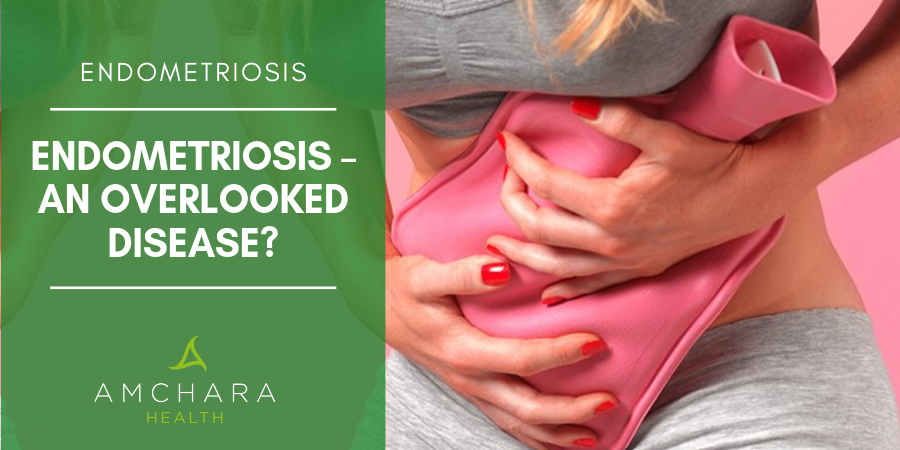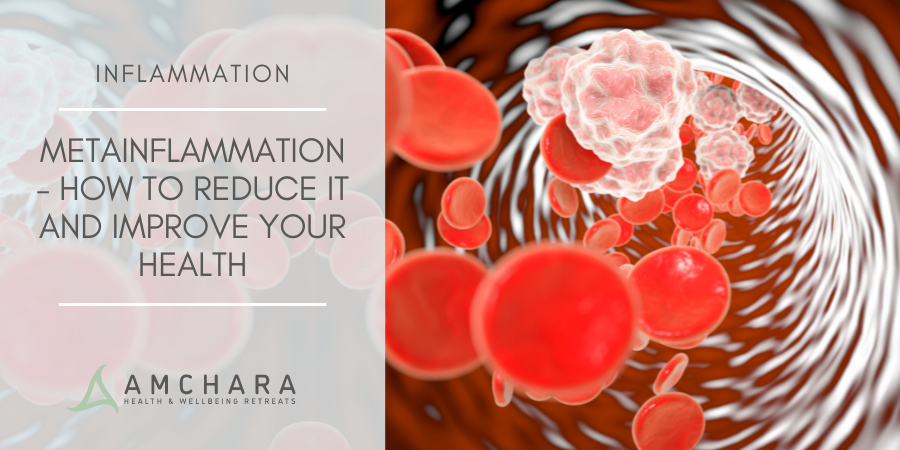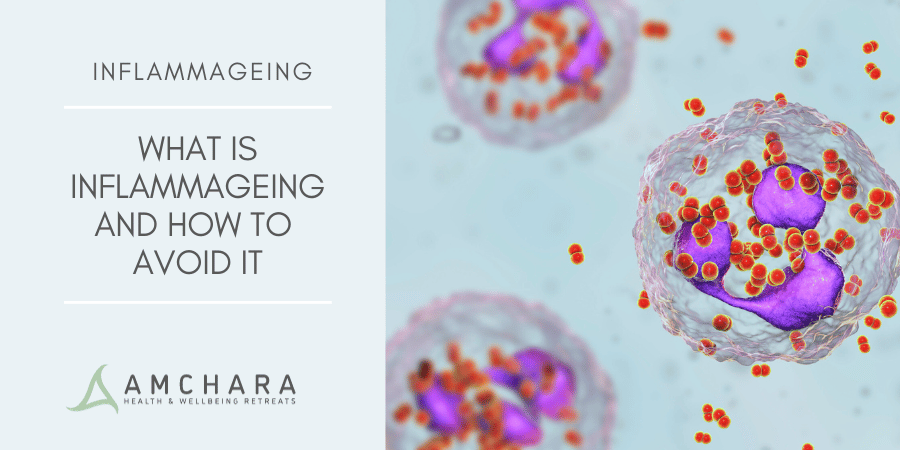Endometriosis is a painful condition associated with disturbances in female hormone balance.
Despite being widespread, it’s a poorly-understood condition and awareness is low.
Our mission is to provide you with insightful information – we always take an evidence-based approach and aim to provide you with actionable knowledge and tips to help you on your journey to optimal health.
In this article we look at what happens to the body in endometriosis, symptoms, possible causes and some treatment options.
How Common is Endometriosis?
As many as one in ten women of reproductive age are affected by endometriosis (1), making it the second most common gynaecological complaint.
This translates to as many as 1.5 million women in the UK, or 176 million women worldwide.
It’s surprising, therefore, that so little is known about it.
Endometriosis is most common in women in their thirties or forties, although it is becoming more widespread in younger women too and it can start at puberty.
One study in 2015 found 12% of 15-year-olds with severe period pain had endometrial lesions, suggesting its prevalence has traditionally been underestimated in this age group (2).
Symptoms usually disappear with the onset of the menopause, although women who take HRT may find they continue suffering.
Symptoms of Endometriosis
Symptoms of the disease vary between women.
Some women may have no symptoms at all, however for the majority of women, the effects of the disease are severe enough to disrupt daily life.
Symptoms can include:
- Pelvic pain, which is often sharp, abdominal pain just before, during or after a period. Some women experience pain at ovulation or even all month round. Pain may spread to the back or the legs. The type of pain experienced in endometriosis can be severe, and often isn’t alleviated by painkillers. Some women report finding the pain of endometriosis comparable or even worse to that of childbirth.
- Heavy, painful periods. This is known as dysmenorrhea. Some women have lengthy periods and may produce large clots in their menstrual blood. Other women experience bleeding between periods.
- Pain during intercourse, which can be severe and last several days.
- Pain during bowel movements or pain when urinating.
- Infertility. Endometriosis is thought to be a major factor in infertility. One study found 47% of infertile women had endometriosis, some of whom were asymptomatic (3).
- IBS symptoms, including diarrhoea, constipation and cramping.
- Fatigue.
For some sufferers, endometriosis can be a debilitating condition which seriously impacts upon a sufferer’s life, preventing them doing normal activities and going to work.
Those affected often suffer from depression.
What is Endometriosis?
The endometrium is the mucous membrane tissue lining the inside of the uterus.
Every month this tissue responds to signals from our sex hormones which are released in a distinct pattern.
Female hormones have one main aim – preparing a woman for pregnancy and eventually nurturing a baby.
The uterine lining responds to the message of oestrogen by increasing in thickness ready to receive a fertilised egg.
If pregnancy doesn’t occur, oestrogen and progesterone levels will drop, resulting in the uterine lining to shed, which causes the menstrual flow during a period.
In the case of endometriosis, microscopic portions of the tissue somehow become detached from the uterine lining and migrate around the body where they stick to other organs and tissues.
There they continue to behave as if they were still inside the uterus.
They thicken according to the message from oestrogen, then eventually break down and shed.
However, because they’re embedded in other tissue, they have nowhere to go and become a source of irritation and inflammation.
Eventually, cysts (known as endometrioma), scar tissue and adhesions can form – which is when organs ‘stick’ to one another.
These can cause extreme pain which varies depending on which organ is affected.
Cysts often form on the ovaries and can grow as large as eight inches in size.
The misplaced areas of uterine tissue are known as lesions.
They have been found in many locations in the body, but they often form in the abdominal cavity, on the ovaries, the fallopian tubes, the tissue lining the pelvis or the outside of the uterus.
Symptoms vary according to where the lesions are found.
For example, if the endometrial tissue adheres to the bladder, it may cause urinary urgency, or pain associated with urinating.
If the lesions affect the bowel, they could cause IBS or pain when opening the bowels.
Lesions can vary in size, although how large they are doesn’t appear to be connected with the severity of the pain experienced (4).
They also differ according to how deeply they penetrate into the organs they are affecting.
It’s thought the pain may be caused by the lesions pressing on a nerve or from scar tissue or irritation caused when the lesions try to shed.
Endometriosis and Fertility
One major heartbreak for women suffering from endometriosis is infertility.
Around a third to a half of women with endometriosis have problems getting pregnant.
This happens when endometriosis affects the fallopian tubes, which are the means for an egg to travel down from the ovaries to the womb each month.
If a woman is able to conceive, symptoms often go away during pregnancy only to reappear some time afterwards.
This is because the massive change in hormones during pregnancy means the endometrial lesions no longer respond to monthly hormonal changes.
What Causes Endometriosis?
It’s not fully known what causes the migration of endometrial tissue, and several theories are in existence.
- Retrograde Menstruation
This is the oldest theory of the cause of endometriosis.
When a woman has a menstrual period, parts of the uterine lining which come away make their way through the cervix and into the vagina to form the menstrual period.
Occasionally bits may flow backwards – in other words, upwards into the fallopian tubes and into the pelvic cavity where they stick to the inside of the pelvic walls and to the pelvic organs.
Some experts believe this happens fairly frequently, however in most cases the immune system destroys these fragments before they can do any damage.
In women affected by endometriosis, a problem with the immune system prevents the fragments being destroyed.
This theory also suggests the tissue may sometimes end up in the bloodstream or the lymphatic system and that is how they can attach to distant organs such as the lungs.
In fact, endometrial tissue has been found in lymph nodes (5).
However, this theory does not explain why some women, following a hysterectomy, still develop endometriosis, nor does it explain why it is – albeit rarely – seen in men who have received treatment with oestrogen.
- Induction Theory
Another theory is the induction theory.
It’s thought rather than the tissue migrating to where it is found, hormones or immune factors make cells which line the inner abdomen transform into endometrial cells, which are then in the wrong place.
This is called metaplasia, and it may occur because of the influence of oestrogen, or as a result of unknown substances which are released by normal endometrial tissue.
This theory would explain how endometrial tissue is able to appear in organs distant from the uterus and in women with no womb.
- Stem Cell Theory
This theory hypothesises that stem cells, which are undifferentiated cells which haven’t yet become a specific type, travel from the womb lining, probably by retrograde menstruation, to elsewhere in the body. They then form endometrial lesions.
- Environmental Pollutants
Some researchers believe environmental toxins such as dioxins can affect the immune system and reproductive system in some as yet unknown way, causing endometriosis.
Dioxins are by-products of industrial processes which make their way into the food chain.
Research has shown when animals are exposed to high levels of dioxins they developed endometriosis (6).
- Endometrial Disease Theory
This theory believes the cause of endometriosis is made up of many factors.
It recognises endometrial tissue in women affected by endometriosis behaves differently to other body cells.
It proliferates more rapidly and cells don’t die as quickly.
Cells also produce substances which enable them to attach more easily to other body tissues.
Added to this, the endometrium cells tend to grow nerve fibres more readily which would explain why endometriosis causes extreme pain.
According to this theory, endometrial lesions behave differently because they have a higher capacity to synthesise oestrogen.
At the same time, immune cell regulation is altered which impedes clearance of the endometrial tissue.
Women with endometriosis have been found to have an immune system which fails to destroy the endometrial tissue by means of macrophages, specialised immune cells which usually gobble up invaders.
It seems that female hormones can also influence immune function in women with endometriosis.
Progesterone would normally suppress an overactive immune system, but research suggests women with endometriosis are to some extent progesterone resistant.
All this infers endometrial cells from women with endometriosis possess definite characteristics which enable them to remain viable, evade the immune system, implant and survive outside the uterus.
Endometriosis, Inflammation and the Microbiome
The body is though to react to endometrial tissue with an inflammatory response.
Even though the immune system is not removing the invading tissue, it appears to react to it by releasing inflammatory molecules.
The extra oestrogen synthesised by endometrial tissue can promote further inflammation.
However even when oestrogen levels are reduced, patients can still experience inflammation.
Exciting new research has linked this with changes in the microbiome – the population of bacteria living in a women’s pelvic cavity, vagina and uterus, which influence the immune system to release these inflammatory substances.
It appears women with endometriosis have a unique population of bacteria in their bodies, which is thought to be closely linked to the bacterial balance of the digestive system.
It’s likely the cause of endometriosis is a combination of factors recognised in the above theories.
Risk Factors for Endometriosis
- Women are more likely to develop endometriosis if they have never given birth, started their periods early, or go through their menopause at an older age then average (7). All these factors tend towards a high level of oestrogen in the body.
- One study showed women with a low body mass index have a greater risk of developing endometriosis than heavier women. In fact, researchers found the risk of endometriosis was almost 40% lower in obese women, although the reason for this remains unclear (8).
- Endometriosis appears to be more common on women who have a shorter or longer than usual menstrual cycle. All women’s cycles are different, however those who have less than 25 days between their periods or who bleed for longer than seven days are twice as likely to develop endometriosis.
- It’s thought as many as 50% of cases of endometriosis are genetic, although research is ongoing in this area to examine the genome of women with the disease.
Diagnosis
Initially, a GP will perform a pelvic exam, were he or she will manually feel the pelvis for any abnormalities such as cysts or scars.
It’s usually not possible to physically feel small areas of endometrial tissue.
An ultrasound may be useful.
This uses high frequency sound waves to create an image of the inside of the pelvic cavity.
This test may identify cysts associated with endometriosis but will not pick up the lesions themselves.
MRI imagining uses a magnetic field and radio waves to map images of the body.
It can give information about the size of endometrial lesions.
However, because the symptoms of endometriosis are similar to those of other conditions such as ovarian cysts or pelvic inflammatory disease, a definitive diagnosis is usually only possible by means of a laparoscopy.
This involves looking at the abdominal cavity with a tiny camera which is inserted into the abdomen under general anaesthetic by means of a small incision.
This way the location and size of the endometrial lesions can be seen.
During the laparoscopy, the endometrial tissue can often be removed at the same time.
Unfortunately currently there’s no blood test or other biomarkers to definitively test for endometriosis without this surgery.
However, ongoing research into the characteristic bacterial profile found in the disease could one day pave the way to a less invasive test (9).
Conventional Treatment
There is no conventional cure for endometriosis and unfortunately many women struggle to find treatment to manage their symptoms.
Drugs can manage the symptoms but if they are discontinued the condition will more than likely recur.
Non-steroidal anti-inflammatories such as ibuprofen and naproxen sodium are often offered to help alleviate pain.
Even if they do reduce pain, they won’t address the cause.
These drugs also come with side effects like stomach inflammation and pain.
Because of the role of oestrogen in causing the endometrial lesions to thicken and bleed, most treatments concentrate on reducing levels of oestrogen.
Sometimes GPs will prescribe birth control pills or patches to be taken continuously, effectively preventing periods and creating a false pregnancy.
However upon stopping the hormones the problem frequently returns, and some women experience side effects such as high blood pressure, headaches, nausea and breast tenderness, and even blood clots.
Drugs known as gonadotrophin releasing hormone agonists block the production of hormones which stimulate the ovaries to produce oestrogen, therefore reducing the level of this hormone and causing the endometrial lesions to shrink.
They effectively put a woman into an artificial menopause so she may experience menopausal symptoms such as hot flushes and vaginal dryness.
Other treatment options include male hormones, known as androgens, which contain a form of testosterone.
They work by stopping the menstrual cycle, so preventing the lesions bleeding.
These drugs do come with side effects however, such as increased male characteristics like increased body hair and acne and are not used frequently nowadays.
As mentioned above, laparoscopy can remove the endometrial lesions, but it is a complex procedure and tricky for the surgeon to be sure all the tissue is removed.
After laparoscopy, symptoms should disappear, but some women find the tissue regrows and their endometriosis returns post-surgery.
If the above measures aren’t effective, a complete hysterectomy may be offered, which involves surgically removing the womb and ovaries so no more hormones are produced on a monthly basis.
This will put the women into menopause. In rare cases, however, endometriosis can even return after a hysterectomy.
None of the above treatments are addressing the underlying cause of endometriosis which even today remains unclear.
Endometriosis – an Overlooked Disease?
Endometriosis is a challenging condition, not least because the pain can be so severe.
The impact of endometriosis cannot be underestimated. Some women report experiencing pain so severe they pass out.
According to Endometriosis UK, surveys of members revealed as many as a quarter of sufferers had felt suicidal because of it.
The condition affects work, career, relationships and fertility.
However many women struggle to have their endometriosis diagnosed and find it hard to convince their GP to take their symptoms seriously.
Many suffer for years before they obtain a diagnosis.
Unfortunately, many women are told the pain is all in their head, or it’s completely normal to experience pain during menstruation.
The All-Parliamentary Group on Women’s Health reported in 2017 that 40% of women with endometriosis needed ten or more GP consultations before they were referred (10).
According to Endometriosis UK, research has shown there is an average of seven and a half years between women first seeing their doctor and receiving a diagnosis (11).
Far too many women put up with symptoms because there is no ‘normal’ when it comes to menstrual symptoms and there still exists a stigma surrounding talking about women’s issues.
Guidance from NICE in 2017 stressed to GPs they must listen to women who complain of pelvic pain and period pain.
Personalised Medicine and Endometriosis
Some experts believe they are seeing more serious cases of endometriosis than in the past, as well as cases appearing at a younger age, which would suggest lifestyle and environmental factors may be a contributory factor.
Endometriosis is a tricky disease to treat, because we don’t fully understand what causes it.
However, naturopaths recognise many women suffer from imbalanced levels of oestrogen and progesterone which may be caused by many factors including nutrition, lifestyle, bowel function and liver health.
By measuring hormone levels and correcting the cause of any hormone imbalance, the factors which may be causing endometriosis in the first place can be addressed.
It’s now becoming obvious inflammation plays a crucial role in many diseases, endometriosis included.
The cornerstone of any personalised health recommendation will be the management of inflammation.
A therapist may recommend dietary, lifestyle or herbal measures.
We believe sharing knowledge and experience is an important part of achieving optimal health and would love to hear your views and experiences.
Tell us where you started, what has helped you and what you found useful about this article.
Have you been affected by endometriosis?
We’d love to hear your thoughts.
By Cathy Robinson BScDipNutMed
READ THIS NEXT:




